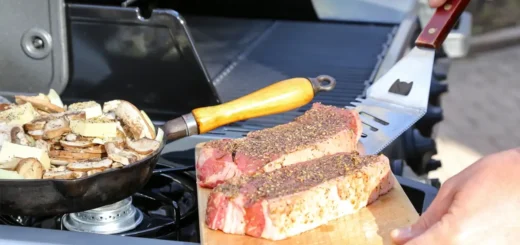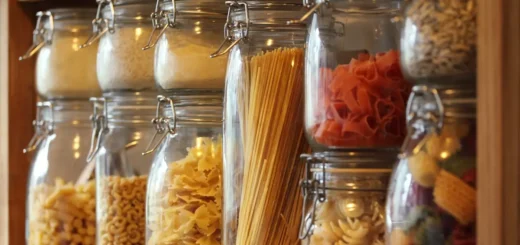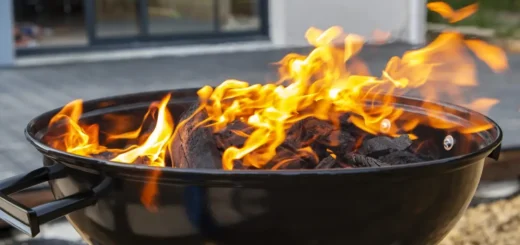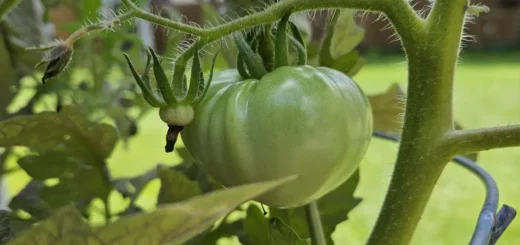Prepping Food for Winter: Best Canning, Drying, and Smoking Techniques
Hey there, fellow preppers! It’s not common that we get winter weather here in the South. But as winter wraps its chilly arms around us, it’s the perfect time to explore the age-old food preservation practices. As preppers, this cannot be understated. So with that, in this Southern Prepper Magazine post, we’re giving tips and techniques for prepping food for winter including: canning, drying, and smoking – Everything you need to get through the colder months.
Table of Contents
Embracing the Harvest: The Art of Canning
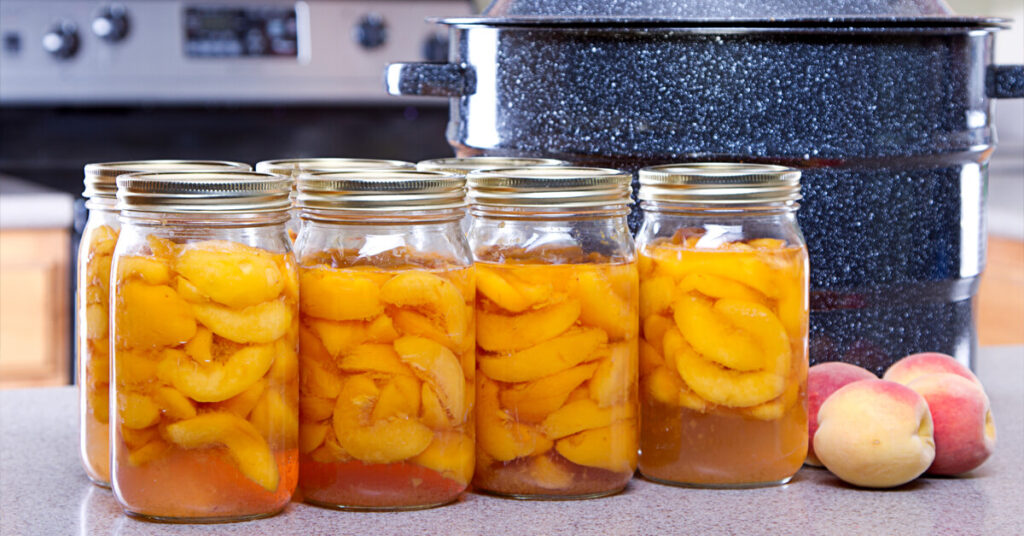
Canning is a simple yet effective process, transforming the summer’s abundance into jars of jewel-toned treasures.
It’s not just about preserving food — although that’s easily the most important aspect — it’s about capturing the essence of the seasons.
Just because you’re prepping doesn’t mean it can’t be nutritious and delicious.
The Process
Canning involves placing fruits and vegetables in jars and heating them to a temperature that destroys microorganisms.
This process also creates a vacuum seal, preventing new organisms from entering and spoiling the food.
Techniques
There are two main ways you can go about canning your harvest—
- Water Bath Canning. Ideal for high-acid foods like tomatoes, fruits, jams, and pickles.
- Pressure Canning. Necessary for low-acid foods like vegetables, meats, and poultry to ensure food safety.
Neither of these is better than the other, but instead, it is more about what type of produce you’re canning at the time.
The Rustic Charm of Drying
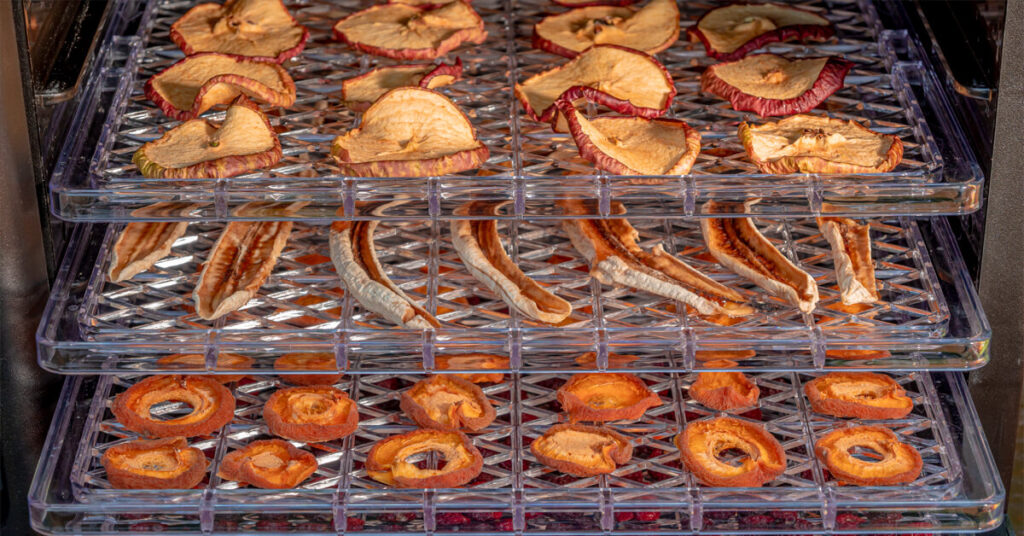
Drying is perhaps the most ancient method of food preservation. It’s a process that combines both time and air, removing moisture and concentrating flavors.
When it comes to meats, you can get about one year out of it if frozen immediately after dehydrating. For fruits and veggies, you can get between 6 and 12 months if frozen as well.
So dehydration is excellent as it extends your ability to sustain yourself and your family for a more extended period.
The Process
By dehydrating fruits, vegetables, and meats, you’re inhibiting the growth of bacteria, yeasts, and mold through the removal of water.
We recommend sealing and freezing the dehydrated food immediately afterward to get the longest shelf life out of them.
Techniques
The best part about dehydrating is that you don’t need any fancy equipment, although it helps—
- Air Drying. Simple and energy-efficient, it works wonderfully for herbs and some fruits.
- Oven Drying. A more controlled environment is ideal for a variety of fruits, vegetables, and meats.
- Dehydrators. For the serious preserver, offering consistent heat and airflow.
Dehydrators make the process super simple, but they can cost upwards of $150. Which, if you’re in it for the long haul, isn’t a bad investment.
The Smoky Whisper of Tradition: Smoking
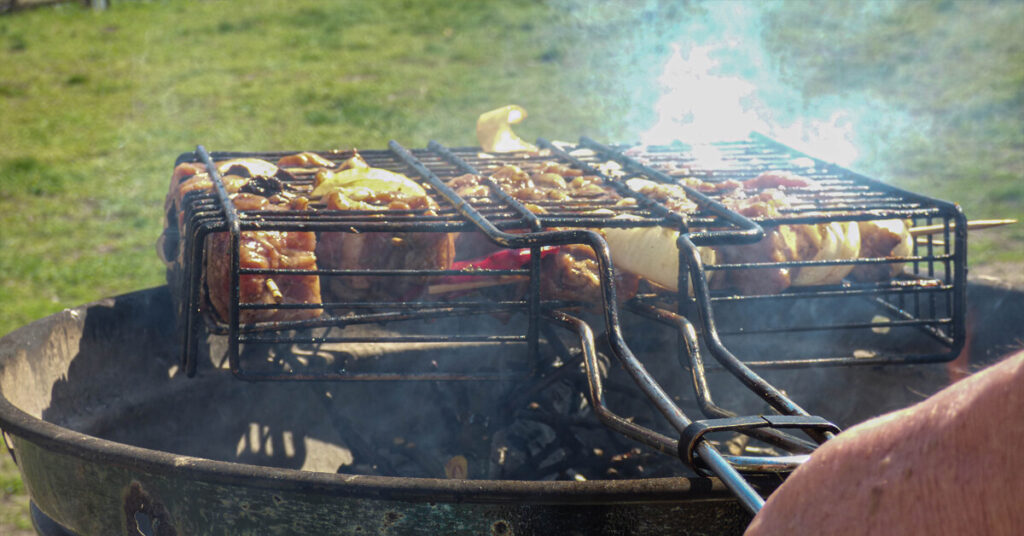
Smoking imparts a unique flavor that’s both earthy and sophisticated. It’s not just a method of preservation but a creator of new flavors – a culinary alchemy. Frankly, it’s one of our favorite methods of preserving for the winter.
The Process
Smoking involves curing food by exposing it to smoke from burning or smoldering material, usually wood. This process dries the food and infuses it with a distinctive smoky flavor.
Sure, it takes a bit longer than canning or dehydrating, but it’s worth it when you’re deep into the winter months and sink your teeth into that delicious food.
The biggest downside with smoking meats is that you only get around three months out of the preservation, even with freezing. So, it’s important to label everything you prepare and set a schedule for when you’re going to consume it.
Techniques
We’ve done both of these techniques when preparing for winter—
- Cold Smoking. Done at temperatures below 85°F, it’s great for flavoring foods like cheese and fish.
- Hot Smoking. Occurs at higher temperatures, cooking the food while infusing it with smoke.
Winter Food Prepping: Practical Tips and Considerations
We’ve put together some tips that worked well for us over the years. Hopefully, they’ll make an impact for you while you’re getting ready for the winter.
Safety First
Safety is paramount in preparing for winter, especially when preserving food like canning and smoking meats. After all, you might not have access to medical professionals if you’re in a dire situation.
Adhering to established safety guidelines ensures that food tastes great and is safe to consume.
Keeping everything clean, using the correct temperatures, and following proper canning procedures are crucial steps to prevent spoilage and foodborne illnesses.
Quality Matters
Starting with fresh, high-quality produce and meats is so important when it comes to prepping for the winter.
The quality of these ingredients greatly influences the preserved food’s final taste and nutritional value.
If you’re not hunting for the meat yourself or growing it in your garden, then sourcing from local farmers or reputable suppliers guarantees the freshness and quality of the ingredients, making a noticeable difference in the end product.
Patience is Key
The art of preserving food is a time-honored tradition that requires patience and attention to detail.
Whether it’s canning fruits, smoking meats, or fermenting vegetables, these methods demand a certain level of dedication and time. It’s not for everyone, but then again, neither is prepping.
Prepping takes time and patience. When you rush through something, you’re bound to make mistakes.
Experimenting
Experimentation with different flavors is key to discovering personal preferences and expanding culinary horizons. As we mentioned, the taste doesn’t have to be boring just because you’re prepping.
Trying various herbs, spices, and types of smoking wood can lead to unique and delightful flavor combinations. This experimentation encourages creativity and personalization in the kitchen.
Storing and Organizing
Adequate storage and organization of preserved goods are necessary for maintaining their quality and maximizing shelf life.
Properly labeling and dating jars and containers, organizing them for easy access, and regularly checking for signs of spoilage are essential practices. Remember, even the canned and smoked meats still have a shelf life, albeit longer than if they weren’t canned or smoked.
Efficient storage helps keep track of the inventory and ensures that the hard work put into preserving these foods pays off throughout the winter season.
Get Ready for the Winter
In our climate crazy world, preserving food for the winter using these traditional methods is not only a nod to the past but a step towards sustainable living.
You and your family will be better prepared for anything that comes our way in this chaotic world.
Ultimately, no matter what happens, you have some delicious fruits, veggies, and meats available and ready to cook. Stay safe and stay prepared!


